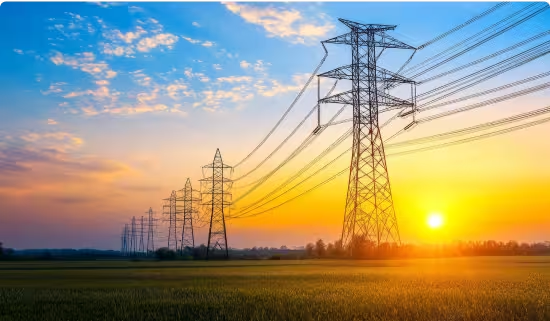
India Untreated Mosquito Nets Market Outlook to 2024
By Unorganized and Organized, By Product Type (Frame/Foldable and Hanging), By Material Used (HDPE & Polyester, Nylon and Cotton), By Bed Size (Double Bed and Single Bed), By Regional Clusters and By Distribution Channel (Offline and Online)
Region:Asia
Author(s):Ishita Dutt
Product Code:KR970
March 2020
93
About the Report
The report titled “India Untreated Mosquito Nets Market Outlook to 2024- By Unorganized and Organized, By Product Type (Frame/Foldable and Hanging), By Material Used (HDPE & Polyester, Nylon and Cotton), By Bed Size (Double Bed and Single Bed), By Regional Clusters and By Distribution Channel (Offline and Online)” gives an in depth, comprehensive study on the untreated mosquito nets market in India. The report covers various aspects including overview & genesis of the market, market trends and challenges, market size by revenue and volume, findings of a detailed customer survey conducted across tier-2 and tier-3 cities in for understanding product adoption, perception and future demand for untreated mosquito net products in various regions, along with segmentations for regional clusters (North India, South India, West India, South India and Central India). The report also maps the competitive landscape of the market including pricing analysis by SKUs, major distributors and their strengths, weaknesses and product innovations.

India Untreated Mosquito Nets Market Overview and Size
Untreated mosquito nets market in India is at a late growth stage as demand has become stagnant for traditional product variants. There is a need for product innovation or disruption in the market, which could further give a push to the demand and resulting in high product awareness and acceptability. Untreated mosquito nets are currently being used as compliment product to other vector control products with higher efficacy, rather than as a substitute.
India Untreated Mosquito Nets Market Segmentation
By Nature of Business (Unorganized and Organized): Production of untreated mosquito nets is a labor intensive and an unorganized industry. The primary production cluster is Karur, accounting for almost half of India’s production of untreated mosquito nets and having 2,000+ knitting looms. It is a highly fragmented market wherein it is impracticable to distinguish manufacturers from distributors because the value chain of the product is simplistic in nature. A manufacturer obtains mosquito net fabric from production plants/factories based in clusters such as Karur and Punjab. After procuring the raw material, his task is to merely cut out the required dimension from the roll and stitch it to form the structure of mosquito net.
By Type of Product (Framed/Foldable and Hanging): Mosquito nets are mainly of two types: framed/foldable nets or hanging nets, the latter contributes the largest share in revenues. Prices of hanging mosquito nets are lower but they offer higher margins to the distributors than framed mosquito nets. Moreover, framed mosquito nets are more popular among middle-income consumers since hanging mosquito nets are not very fancy and product variants and designs are not much diverse. Hanging mosquito nets also come in two types, ones that are hung from all 4 sides to windows and ones that are hung from center to the ceiling, the latter having higher prices in the market.
By Material Used (HDPE & Polyester, Nylon and Cotton): HDPE is the least expensive fabric used for production of mosquito nets, cotton being the most expensive. Cotton is mostly used for baby nets as parents prefer best quality products for their children and cotton is softer on the skin. Terylene is also an upcoming fabric being used in production of untreated mosquito nets in India. Brands such as Verdioz and ANS are the few players who are providing Terylene based mosquito nets as of now. It is considered a better quality of fabric than HDPE (which is the most used fabric currently for production of mosquito nets) owing to its strength.
By Size of Bed (Double Bed and Single Bed): Double bed nets cover king size, queen size, California king size, super king size and are ideal for use of 2 adults at a time. Single bed nets cover single beds, infant cradles, manjis, charpaayi and other such movable bed structures in India. Double bed nets contribute higher share in market size, both in terms of volume and revenue. However, margins may be higher for single bed nets.
By Regional Clusters (North India, South India, West India, East India and Central India): Northeast India is a major demand hotspot for untreated mosquito nets, whereas South India accounts for most of the production. Due to their topography and moist climate, Northeastern states such as Arunachal Pradesh, Tripura, Nagaland and Manipur are major demand hotspots for mosquito nets in India. However, region is not a major supplier of nets due to absence of local manufacturers, leading to increase in imports from China and Bangladesh.
Competitive Landscape in India Untreated Mosquito Nets Market
Major production clusters in India include Karur, Surat, Ahmadabad, Delhi, Bangalore, Chennai and Mumbai. The market is highly fragmented and unorganized. However, due to presence of big manufacturers with high turnover in Tier 1 and Tier 2 cities such as Surat, Ahmadabad and Delhi, the share of unorganized sector has been decreasing marginally. Large scale manufacturers such as Riddhi Mosquito Nets and Gyasi Ram & Associates have a large export base in Africa. Small local manufacturers supply either in the same city or in states with high demand such as Orissa, Bihar, and northeastern states of India. Mosquito nets, being a very niche product was, mostly sold at local mom and pop stores in the past. Off late, a small segment of online business for sale of untreated mosquito nets has sprung up, causing a disruption in the market in Tier I cities and is expected to grow further in future with increase in product traction in the market.
Key Topics Covered
- India Untreated Mosquito Nets Market Overview
- India Untreated Mosquito Nets Market Stage, Evolution and Industry Cycle
- Cluster Mapping of India Untreated Mosquito Nets Market
- India Untreated Mosquito Nets Market Demand and Market Size
- Porters’ Five Forces Competitive Analysis for India Untreated Mosquito Nets Market
- SWOT Analysis of India Untreated Mosquito Nets Market
- India Untreated Mosquito Nets Market Segmentation
- Competitive Landscape in India Untreated Mosquito Nets Market
- Pricing Analysis in India Untreated Mosquito Nets Market
- Distributor List in India Untreated Mosquito Nets Market
- Strength and Weaknesses of India Untreated Mosquito Nets Distributors
- Regulations in India Untreated Mosquito Nets Market
- Trends and Developments
- Issues and Challenges
- End User Perception Analysis- Customer Survey
Products
Key Target Audience
Mosquito Repellent FMCG Companies
Mosquito Net Manufacturers/Distributors
Vector Control Government Organizations
Vector Borne Diseases NGOs
Untreated Mosquito Net Companies
Consultancy Companies
Time Period Captured in the Report
Historical Period: 2017-2019
Forecast Period: 2020F-2024F
Companies
Key Segments Covered
India Untreated Mosquito Nets Market
Revenue by Market Structure
Unorganized
Organized
Revenue by Product Type
Framed/Foldable
Hanging
Revenue by Material Used
HDPE and Polyester
Nylon
Cotton
Volume and Revenue by Bed Size
Double Bed
Single Bed & Infant Bed
Volume by Region
North India
South India
West India
South India
Central India
Revenue by Distribution Channel
Kirana Stores
Flea Markets
Furniture and Furnishing Stores
Supermarkets, Cosmetic Stores & Other Non Grocery Retailers
Online Platforms
Companies Covered
Archie (Royal Mosquito Nets)
Classic Mosquito Nets
Athena Creations
Story@Home
Healthgenie
Healthy Sleeping Mosquito Net
Creative Mosquito Net
Verdioz
Riddhi Mosquito Nets
Sankari Plastic
Shoo Moski
Neruti Enterprise
Oscar Overseas
Pacicorp Organics
Table of Contents
1. Executive Summary
2. Research Methodology
2.1. Market Definitions and Size
2.2. Abbreviations
2.3. Market Sizing and Modeling
Consolidated Research Approach
Market Sizing Aproach
Sample Size Table
Limitations
Final Conclusion
3. India Untreated Mosquito Nets Market Overview (Market Stage, Evolution & Industry Cycle)
3.1. Market Stage
3.2. Market Evolution and Industry Cycle
Cluster Mapping of Untreated Mosquito Nets in India
Malaria Cases in India by State/UT
Dengue Cases in India by State/UT
Kala-Azar Cases in India by State/UT
Japanse Encephalitis and Acute Encephalitis Syndrome Cases in India by State/UT
Chikungunya Cases in India by State/UT
Export-Import Scenario
4. Untreated Mosquito Nets Demand and Industry Revenue in India, 2017-2024F
Key Takeaway
5. Porter’s Five Forces Competitive Analysis for Untreated Mosquito Nets Market in India
6. SWOT Analysis of Untreated Mosquito Nets Market in India
7. India Untreated Mosquito Nets Market Segmentation, 2017-2019
7.1. By Unorganized and Organized, 2017-2019
Key Takeaway
7.2. By Structure (Frame/Foldable and Hanging), 2017-2019
7.3. By Material Used (HDPE, Nylon and Cotton), 2017-2019
Installed Capacity, Production, Capacity Utilization and Consumption of Nylon, Polyster and HDPE in India
7.4. By Bed Size (Double Bed and Single Bed), 2017-2019
7.5. By Regional Clusters (North, South, East, West and Central), 2017-2019
7.6. By Distribution Channel (Kirana Stores, Flea Markets, Furniture & Furnishing Stores, Other Offline Channels and Online), 2017-2019
8. Competition Landscape in India Untreated Mosquito Nets Market
8.1. Pricing Analysis of Untreated Mosquito Nets in India
Average Prices by Structure (Frame & Hanging) and Size (Single Bed and Double Bed)
8.2.Distributor List in India Untreated Mosquito Nets Market
Distributors’ List including Price Range by Structure & Size and Material USed
List of Popular Distributors and Highest Selling Net Fabric
8.3.Strengths and Weaknesses of Major Players in India Untreated Mosquito Nets Market
Dimensions Available with Classic Mosquito Net
Dimensions and Price List of Creative Mosquito Net
Dimensions and Price List of Riddhi Foldable Mosquito Nets
8.4.Regulations in India Untreated Mosquito Nets Market
Tax Levied Post GST Implementation
Trading of Untreated Mosquito Nets
9. Trends and Developments in India Untreated Mosquito Nets Market
Infant Bed and Stroller Nets
Government Measures
Hammock Mosquito Nets
Increase in Domestic Production Capacity of Petrochemicals
Online Branding
Yoga and Meditation Mosquito Nets
10. Issues and Challenges in India Untreated Mosquito Nets Market
Disruption Due to Online Sellers
Impact of US-Iran Conflict on Raw Material Cost
Scarcity of HDPE Faced by Domestic Mosquito Net Manufacturers
Terylene Mosquito Nets
11. End User Perception Analysis in India Untreated Mosquito Nets Market
Key Results from the Survey
11.1. Customer Survey Results
Questions for Buyers
Average Replacement Rate of Buyers
Questions for Non-Buyers/ Potential Buyers
Disclaimer
Contact Us
Why Buy From Us?

What makes us stand out is that our consultants follows Robust, Refine and Result (RRR) methodology. i.e. Robust for clear definitions, approaches and sanity checking, Refine for differentiating respondents facts and opinions and Result for presenting data with story

We have set a benchmark in the industry by offering our clients with syndicated and customized market research reports featuring coverage of entire market as well as meticulous research and analyst insights.

While we don't replace traditional research, we flip the method upside down. Our dual approach of Top Bottom & Bottom Top ensures quality deliverable by not just verifying company fundamentals but also looking at the sector and macroeconomic factors.

With one step in the future, our research team constantly tries to show you the bigger picture. We help with some of the tough questions you may encounter along the way: How is the industry positioned? Best marketing channel? KPI's of competitors? By aligning every element, we help maximize success.

Our report gives you instant access to the answers and sources that other companies might choose to hide. We elaborate each steps of research methodology we have used and showcase you the sample size to earn your trust.

If you need any support, we are here! We pride ourselves on universe strength, data quality, and quick, friendly, and professional service.















